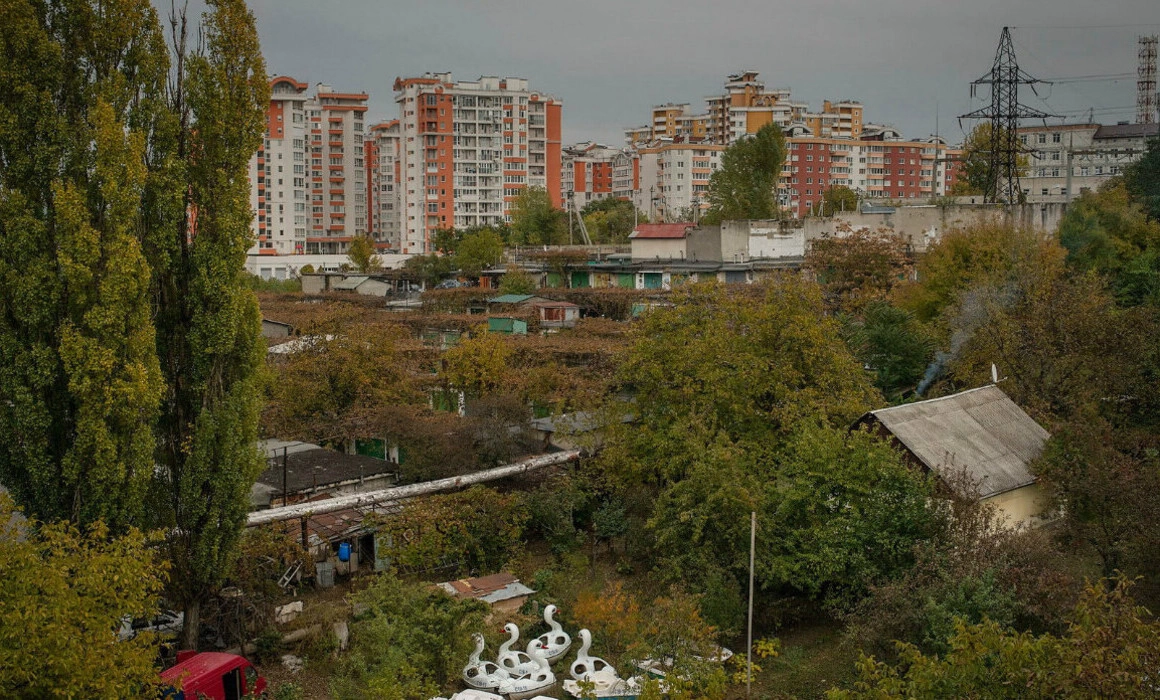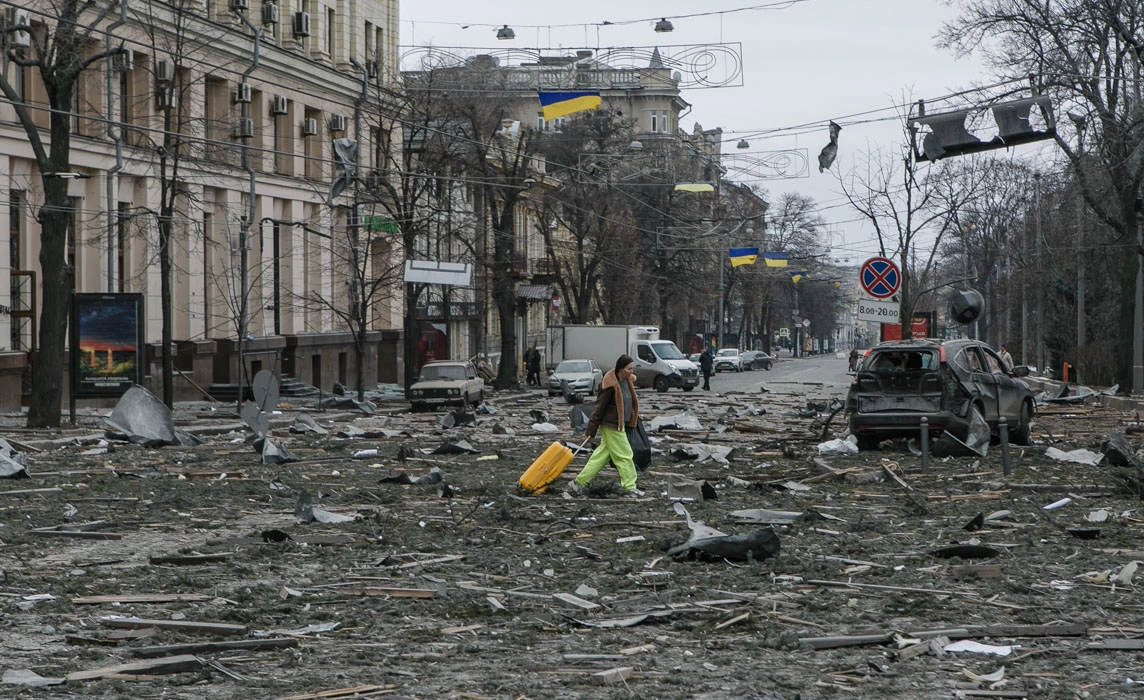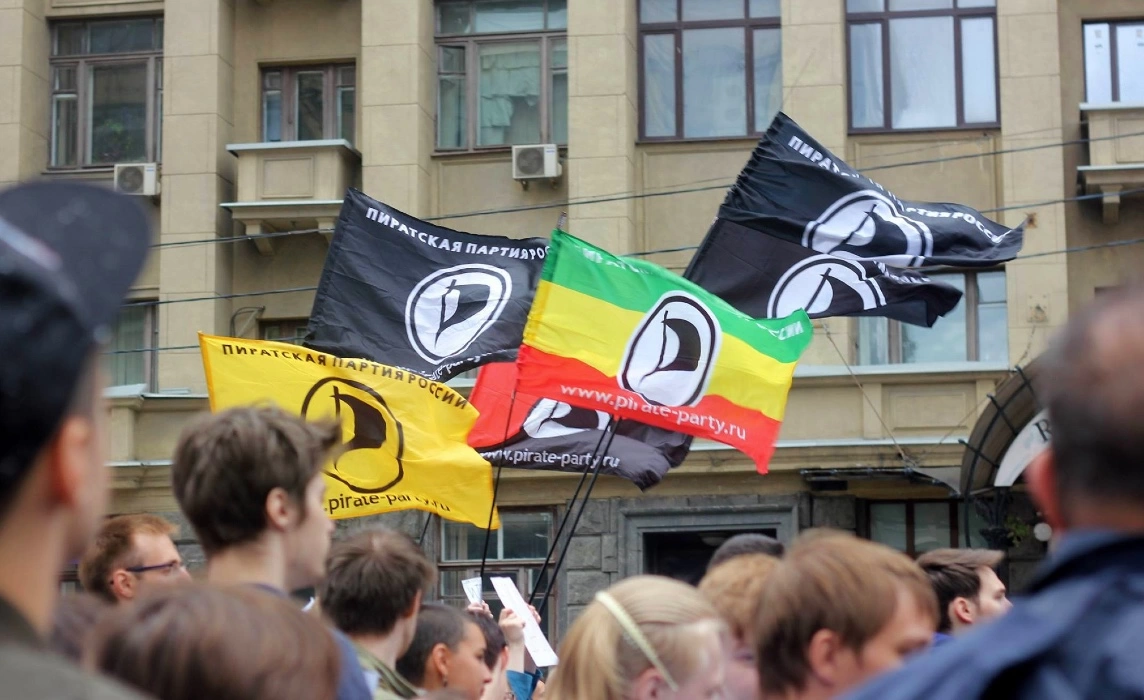How, where and with what justification could Russia launch an attack?
In 2021, Russian president Vladimir Putin published a rambling essay on the Kremlin’s website called ‘On the Historical Unity of Russians and Ukrainians’. As a work of historical analysis it is questionable, but as a historical document, it is incendiary, because it maps out the Russian dictator’s justification for war against Ukraine. Though the country of Moldova figures little in Putin’s survey of 1,500 years of territorial and cultural disputes, he does refer to Romania’s ‘occupation’ of Bessarabia, an area which constitutes much of today’s Republic of Moldova. After Imperial Russia’s victory over Napoleon in 1812, this region passed into Russian control for 100 years, and, following World War I, it came under the wing of Bucharest. Once the USSR claimed victory in World War II, it ping-ponged back to Moscow, before finally gaining independence in 1991. Now another regional war is raging, and the question is: where will Moldova end up once this tragedy is over?
On 1 March 2022, in an address to the Belarusian security council, the country’s president, Alexander Lukashenko, pointed a stick to a map which appeared to show a plan to shift the Russian military from the Odessa region to the breakaway state of Transnistria, a self-declared republic which is part of Moldova, and borders Ukraine to the east. The Belarusian ambassador to Moldova later claimed it was a mistake. This set off fears that Moldova was about to fall into the Russian firing line. On 7 March 2022, the former director of CIA, general David Petraeus, confirmed this assessment, by declaring: “Odessa and Moldova are in danger.”
But does this mean Russia will seek to annex only the frozen conflict zone of Transnistria, or the entire territory of Moldova? On 4 March 2022, President of Moldova Maia Sandu formally requested that Moldova should join the EU, and the Transnistrian authority reacted with a carefully-worded communique saying her move westward was “a geopolitical decision leading to a change in international borders and spheres of influence in the regional space.” It stated that the settlement process for resolving the frozen conflict was now over, Moldova was “transferring” its sovereignty to Brussels, and Transnistria wanted independence.
This was not a new position. Vadim Krasnoselsky, the president of Transnistria, declared in 2018 that he upheld a 2006 referendum in the region, which called for the republic to be an independent state, with subsequent entry into Russia. “Our people have made their choice,” he said. “And this choice has no alternative.” This line has been consistent, and many observers in Moldova see no difference between Russia and Transnistria. They believe every major political decision in the conflict zone is made in Moscow, and if Putin chooses to drive his tanks into the eastern bank of the Nistru river, many locals would greet the invaders with flags and flowers.
But the main question is: will the Russian army go further west?
Russia Calls Out Transnistrian Missile Attack as “Fake News”
“Are you scared?” I ask Sergiu Tofilat, a veteran of public demonstrations against Government corruption, and now an expert at Chisinau-based think tank Watchdog MD.
“I would rather say I am concerned,” he says. “After Ukraine, Putin wants to create a corridor in the south of Ukraine, towards Transnistria, and if that happens, we are the next target.”
So far, Transnistria has been restive.
When the war began, there were reports that shells were fired from Transnistria into the Ukrainian town of Podilsk, near the Moldovan border. Not only was this denied by the Ministry of Defense of Moldova, but also by its counterpart in the Russian Federation. On 7 March, the Russian Ministry flagged this as an example of ‘fake news’, as he usually does. This indicates that, at the present time, Russia does not want to give the impression the conflict is coming to the region.
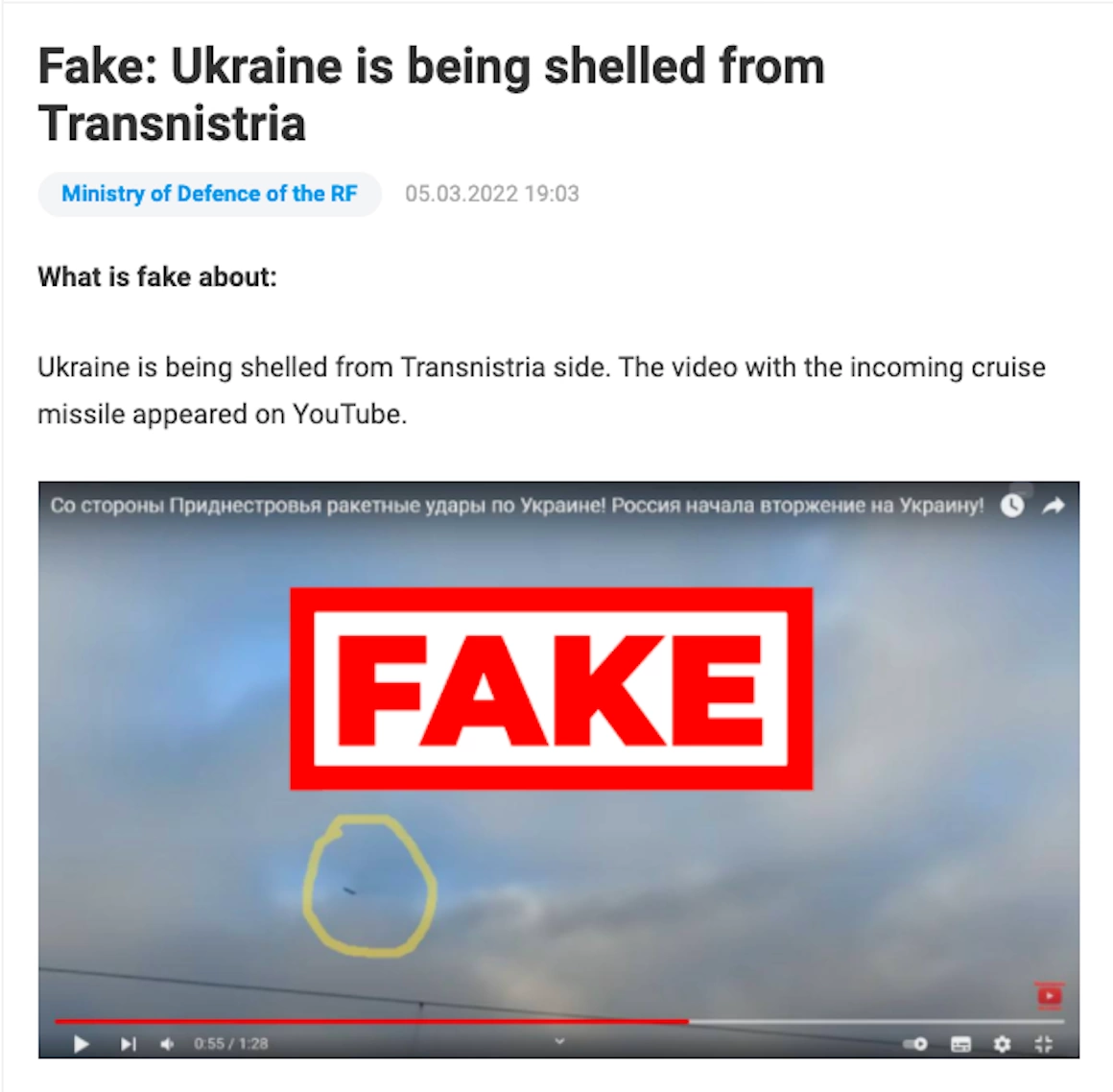
Transnistria is a military threat to its neighbors. The region detached itself from Moldova in 1990, and established itself as a republic. In 1992, after a civil war with Moldova ended in a ceasefire, the region stayed in limbo for 30 years. During this time, 1,500 Russian ‘peacekeepers’ have been protecting a Soviet ammunition dump in Cobasna, in the north of the region. This contains up to 22,000 tons of military equipment and ammunition, and is the arsenal of the USSR’s 14th Army. Today, these peacekeepers are, in the majority, locals from the area, including Ukrainians, and no one is really sure whether these arms are still usable, and how many of them have disappeared.
However, Transnistria is a site of weapons manufacture, according to news reports and local knowledge. Allegations have included factories which produced rocket artillery, grenades, anti-aircraft rocket systems, and Kalashnikovs, although the source of this information dates back to 2001. The Ukraine secret services stated that, in 2014, during the first conflict with Russia, Transnistrian smugglers trafficked TNT, detonators and arms to pro-Russian separatists in Odessa. In the last 30 years, there has been no monitoring of these industries. No one knows how many munitions are present in the country. Some of these factories are still running, according to locals, but not at the same rate, or with the same capacity, as 20 years ago.
Could the Transnistrian Army take Moldova on its own? “Now they do not represent a significant threat to our security, but if a corridor is created in the south of Ukraine, the [Russians] can get more troops here,” says Tofilat.
“Ukraine fights not only for Ukraine, but also for Moldova”
“Are you scared?” I ask Ion Manole, executive director of human rights organization, Promo-Lex, which brings cases involving Transnistria to the European Court of Human Rights.
“We are concerned,” he says. “If Putin will take Ukraine, he will not avoid occupying Moldova. If they come to our border, they will not stop at the river. Putin says the Soviet collapse was a tragedy and wants to liberate more countries. This is why Ukraine fights not only for Ukraine, but also for Moldova.”
The techniques that Putin uses in Moldova may be less brutal than in the current war in Ukraine. It may be more similar to the actions Russia used in 2013 and 2014 in Crimea and Donbas, where Putin galvanized followers of the Kremlin line. “There are a lot of influential groups in Moldova who will support and wait for Russia,” says Manole.
Pro-Russian propaganda has been active on TV and the Internet on both sides of the Nistru river in Moldova for decades. Outside of Transnistria, another part of Moldova that may be more welcoming to Russia is the southern region of Gagauzia, home to an ethnic group of Orthodox Turkic-speakers. Historically, this region has been loyal to Moscow, although this affinity has been fading in recent years.
The current President of Moldova, Maia Sandu, won the election in 2020, beating her pro-Russian incumbent, Igor Dodon, and her party, PAS, last year took control of the Moldovan parliament. The thrust of her campaign was to fight corruption, especially against local oligarchs, such as Vlad Plahotniuc, Veaceslav Platon, and Ilan Sor, who have all fled the country.
“Now the interests of the runaway oligarchs and the Russian interests in Moldova are the same,” says Tofilat. “This is to destabilize the situation, get rid of the Government and install a corrupt one, obedient to Moscow.”
Could the Kremlin blackmail Moldova with shutting off the gas?
The Transnistrian economy is dependent on gas subsidies provided by Russian conglomerate Gazprom, whose pipelines transit through Ukraine, the conflict zone, and Moldova. Transnistria burns this gas in its power plant, Kuchurgan, which produces electricity for the whole country. While the breakaway republic helps itself to this energy, at near-zero cost, to power its homes, public institutions and factories, Moldovans have to pay up.
But the two sides of Moldova are knotted together. The gas is still flowing from Russia, through Ukraine (which are both in conflict), to Transnistria and Moldova (which are both in conflict). Gazprom wants to give the appearance of being a legal company that abides by the rule of law. Therefore, it has no contract with Transnistria, as this is a rogue state, but with Moldova. However, Gazprom has been toying with Moldova in the past year, and has given the country until 1 May 2022 to carry out an audit on a historical gas debt. If Moldova fails to draw up the audit, which is likely, Gazprom could break the contract that supplies the gas to the country. “Gazprom will be able to cut off supply from 1 May,” says Tofilat.
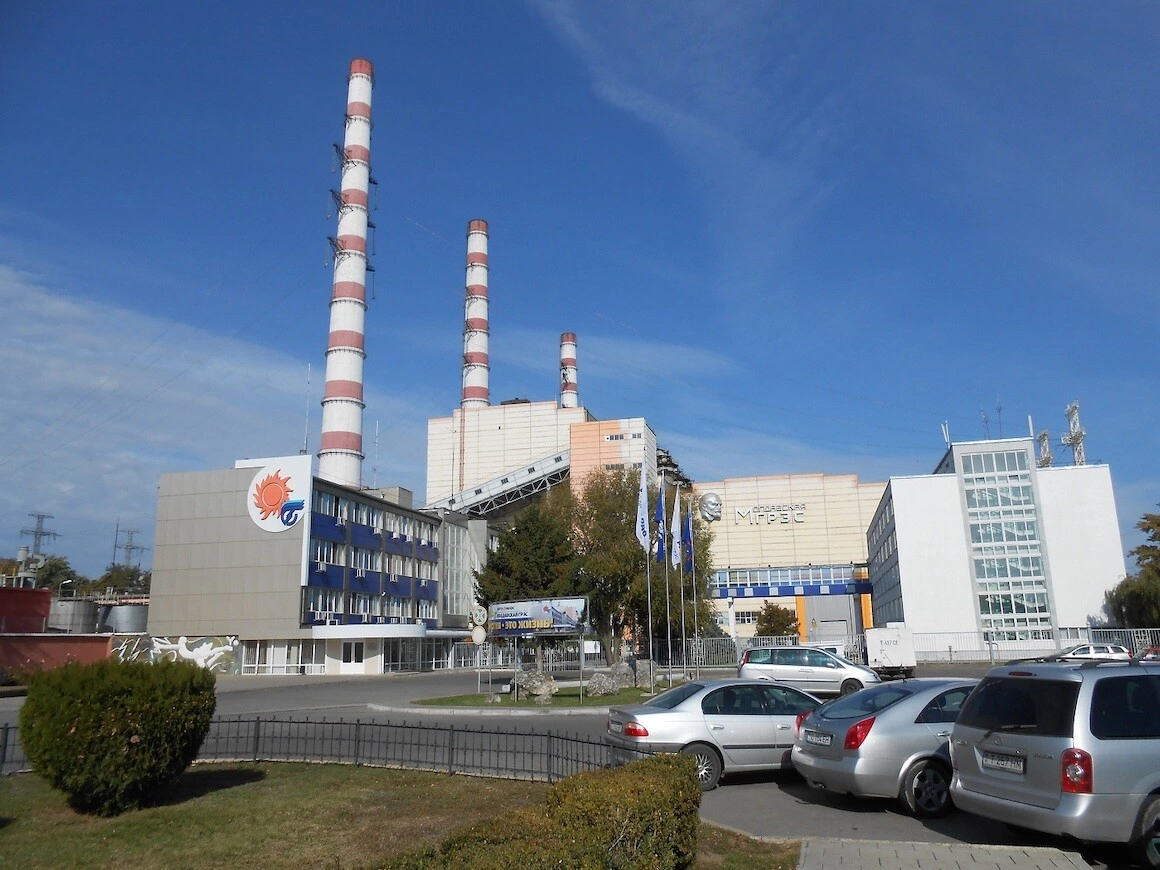
Because Gazprom’s hydrocarbons fuel a large measure of Moldovan electricity, this could lead to blackouts. Due to the structure of the power network, this would be disastrous for the south of Moldova, which is traditionally more pro-Russian, but also Transnistria. “This is a weak point for the Kremlin,” says Tofilat. “It would go against the statement by Putin that Russians will not give up on their nationals abroad.” Even though Russia has force-fed the people of Transnistria with propaganda for three decades, this could affect their sympathy for Moscow. As Tofilat points out, without gas there will be no electricity, and without electricity there will be no TV, and without TV there will be no propaganda.
Can Moldova put up a fight?
Moldovans familiar with the situation in Transnistria are torn over the effectiveness of their own military. Some believe their army is equally matched to the joint Transnistrian and Russian forces, which both, on paper, have the same troop numbers of 5,000 to 7,000. Others believe the firepower of the Transnistrians, which they show off each year on Victory Day, will be too strong for Moldova.
But everyone agrees that if the Russians break through from Odessa, the Moldovan army is unlikely to beat them. “I’m not concerned about the invasion from the Transnistrian side, but the Russian army is a threat,” says Tofilat. Moldova is different from Ukraine. Around 30 to 40% of the population still support Russia, although this fraction is dropping. But more than half of the society does not support Russia, which was demonstrated in the recent Presidential and Parliamentary elections, which gave a firm lead to Sandu and her party, PAS. It is probable that if the Moldovan army folds, the people will turn into partisans against an occupying force.
“This would be a nightmare for the Russian army,” says Tofilat.
How could Russia justify an attack?
Transnistria and its Russian backers are likely to create a casus belli for an attack. One indication is the 3 March communique from the Transnistrian leadership, which asserted the region’s desire for independence, and spoke of how Moldova’s decision to apply for EU accession leads to “a change in international borders”.
Moldova and Transnistria have territorial disputes. The border between the two regions does not follow exactly the historical border of the Nistru river. On the Moldovan side, Transnistria occupies the town of Bender (Tighina). On the Transnistrian side are nine villages under the control of Chisinau. “In the past when Transnistrian authorities spoke about these villages, they said they were under ‘temporary’ control of Moldova,” argues Manole. Tiraspol could make a territorial claim on this area, in words and actions. “This could be an argument to intensify tension between the Moldovan and Transnistrian authorities,” says Manole. Others with deep knowledge of the region back this theory.
Another method is for the Russians to organize an attack on a peacekeeper mission, which protects the ammunition depot in Cobasna. This would give the Russians the premise to intervene. On 13 January 2022, the Ukraine Military Intelligence stated that, in a meeting of the Armed Forces in Transnistria, the attendees “were briefed” that “provocations” from Ukraine are expected in the massive ammunition dump of Cobasna. It added that the Transnistrian security force should be “ready to perform their assigned tasks ‘upon the first order.’” The Ukrainian Intelligence service implied this was an example of a “false flag” attempt by Russia, to bring the Transnistrian Army - and possibly the Russian army stationed in the zone - into battle.
Russia may not be ruling out using personnel from Transnistria in the war. On 9 March, the General Staff of Ukraine’s Armed Forces issued an update which stated: “The occupants do not exclude the opportunity to engage soldiers of the unrecognized [Transnistrian] Republic, in war with Ukraine, of up to 800 people, but the moral and psychological condition of the specified personnel remains low.”
Transnistria: A Conflict Ignored
The frozen conflict was meant to be solved by diplomatic teams from Transnistria, Moldova, Russia, Ukraine and the Organization for Security and Co-operation in Europe (OSCE), plus the EU and the States as observers. But this structure has been little more than a talking shop, and made almost no progress in the 17 years since its inception.
Once the civil war ended in 1992, there has been almost no bloodshed in the region, but Transnistria has remained a black hole regarding the rule of law and transparency. During this time, human rights group Promo Lex has brought 50 cases to the European Court of Human Rights regarding Transnistria. “[These cases were] a big opportunity for Europe and the west to understand the problem and at least try and do something,” says Promo Lex’s Ion Manole. “But the international community for 30 years has accepted to close its eyes and make a deal with Russia.”
Now the Moldovan lawyer is frustrated that the lack of progress has brought the country to a war footing. “We have spoken for many years about these scenarios and nobody listened,” says Manole. “Many times in Europe, when we went to events, and mentioned [to high officials in the EU] how we need to reform our international organizations in Transnistria, and not tolerate the criminal acts and actions of Transnistria, they just laughed. This is sad. I don’t know how they feel now. I would like to see their eyes, and ask them: ‘Do you remember?’”
PHOTO main: Petruț Călinescu
